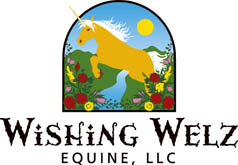Bandages and Leg wraps - Useless and Unhealthy
by Dr. Hiltrud Strasser
Bandages are supposed to protect and support the horses' legs: the tendons and
tendon sheaths above the fetlock joint on the cannon bone, and the fetlock joint
itself.
On the cannon bone are the large, strong flexor and extender tendons of the
hoof, including the corresponding sheaths and ligaments. When the hooves move,
so do the tendons, moving some millimeters sideways. Also, during forward movement,
the extender tendons are at their farthest point away from the cannon bone.
Every time the hooves touch the ground, the flexor tendons (under considerable
tension) snap sideways, slamming into the bandage--and this throughout the entire
ride. At the same time, the bandages chafe the flexor tendons at the seat of
the proximal sesamoid bones of the fetlock joints. This constant irritation
(the chafing and bruising of the tendons) can lead to inflammation, which in
time will become chronic.
As for protection from striking by the hind foot: a few layers of fabric cannot
adequately protect a tendon from such a blow.
Furthermore, bandages and leg wraps impede circulation in the horses’
legs.
During the exercise and exertion of a ride, the blood vessels of the cannon
and fetlock area expand.
However, around the cannon bone, veins and arteries can only expand outward,
since beneath them lies only hard, unyielding bone and no muscle tissue into
which the blood vessels can 'divert'. So if a bandage is pressing against the
cannon bone from the outside, the blood vessels are constricted around the fetlock
joint; the arterial blood that comes from the heart cannot reach down to the
hoof, and the venial blood that is being pushed up by the pumping action of
the hoof cannot flow upwards. Blocked, "filled tendons" are the result.
Boots in their action are no better. They slip down around the fetlock and
block the blood vessels even more than the bandages do.
The well-intended bandaging causes only damage to horses' legs, which need
neither support nor protection. Joints, tendons and ligaments must, through
purposeful training, be strengthened and prepared for greater strain.
Also, the hind hooves should never be allowed to get so pointed that they strike
the forelegs. It is usually only the weight of the shoe that gives the hind
legs so much momentum that they come in contact with the forelegs. The same
rule applies here: Remove the cause.
Copyright Dr. vet. med. H. Strasser
Blaihofstr. 42/1, 72074 Tuebingen, Germany
Tel/Fax: (011) 49-7071-87572
Ed. & Canadian contact: Sabine Kells at email: textorder @ shaw.ca
©2006 by The Horse's Hoof. All rights reserved. No part of
these publications may be reproduced by any means whatsoever without the written
permission of the publisher and/or authors. The information contained within
these articles is intended for educational purposes only, and not for diagnosing
or medicinally prescribing in any way. Readers are cautioned to seek expert
advice from a qualified health professional before pursuing any form of treatment
on their animals. Opinions expressed herein are those of the authors and do
not necessarily reflect those of the publisher.
